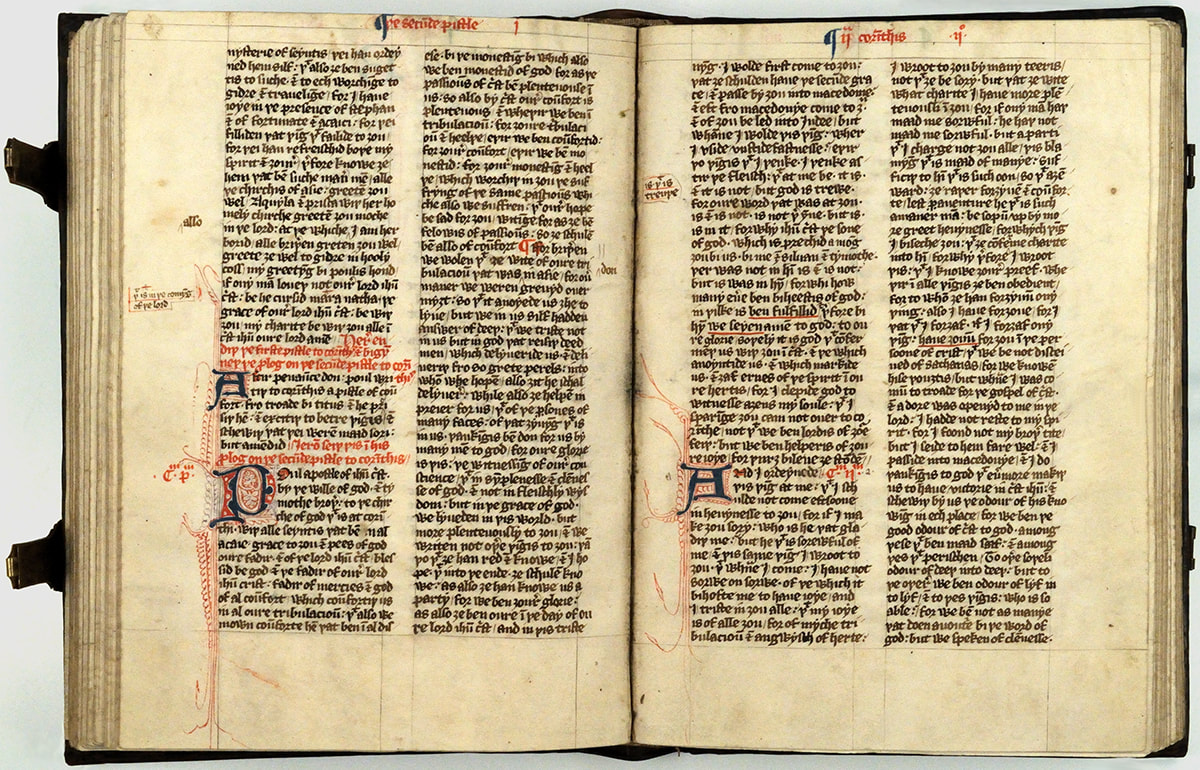
The Wycliffe Bible, named after John Wycliffe, represents a monumental effort in the history of biblical translation and English religious reform. Created in the late 14th century, this translation marks the first known attempt to render the entire Bible into the English language. The Wycliffe Bible played a pivotal role in spreading religious reform ideas, contributing significantly to the Lollard movement. This post will explore specific aspects of the Wycliffe Bible, including its translation methodology, the Lollard movement it inspired, and the Church's response to these revolutionary efforts.
Translation Methodology
John Wycliffe, often referred to as the "Morning Star of the Reformation," spearheaded the translation of the Bible into Middle English. His goal was to make the Scriptures accessible to the common people, who were largely illiterate in Latin, the language of the Church and its Vulgate Bible. Wycliffe and his followers believed that the laity should have direct access to the word of God, bypassing the ecclesiastical hierarchy that controlled religious knowledge.
1. Source Texts: Wycliffe's translation was based primarily on the Latin Vulgate, the standard biblical text of the Western Church. The translators did not work from the original Hebrew and Greek texts, as knowledge of these languages was limited in England at the time. This reliance on the Vulgate introduced certain limitations and peculiarities into the translation, but it was a necessary step given the resources and knowledge available.
2. Translation Process: The process was collaborative, involving several scholars, with Wycliffe overseeing the project. Two primary versions of the Wycliffe Bible exist: the Early Version, completed around 1382, and the Later Version, completed around 1388, which was more polished and accessible. The Early Version is often attributed to Wycliffe himself and his immediate circle, while the Later Version is associated with Wycliffe's follower, John Purvey, who refined and clarified the initial translation.
3. Language and Style: The translators aimed for a literal translation to preserve the meaning of the original Latin text. The resulting language was often dense and awkward, reflecting the Latin syntax and vocabulary. Nevertheless, this effort laid the foundation for future translations and contributed significantly to the development of Middle English prose.
4. Theological Implications: Wycliffe's translation carried significant theological implications. By advocating for the Bible in the vernacular, Wycliffe challenged the Church's control over religious knowledge and promoted the idea that individuals could interpret the Scriptures independently. This democratization of religious knowledge was revolutionary and posed a direct threat to the established ecclesiastical authority.
The Lollard Movement
The Wycliffe Bible catalyzed the Lollard movement, a pre-Reformation Christian reform movement that sought to challenge and reform the Catholic Church's practices and doctrines. The Lollards, named after the Middle Dutch word "lollaerd" (meaning "mumbler" or "mutterer"), were lay preachers and followers of Wycliffe's teachings.
1. Core Beliefs: The Lollards advocated for several key reforms, including:
- The authority of the Bible over Church traditions.
- The rejection of clerical celibacy, transubstantiation, and the sale of indulgences.
- The call for a return to apostolic poverty and simplicity.
- The belief that the Church should be subordinate to the State.
2. Spread and Influence: The Lollard movement spread rapidly across England, particularly among the lower and middle classes. Wycliffe's ideas resonated with those disillusioned by the wealth and corruption of the Church. Lollard preachers, often traveling in disguise, disseminated Wycliffe's teachings and the English Bible, using it as a tool for preaching and teaching.
3. Persecution and Legacy: The Lollards faced severe persecution from both the Church and the Crown. The movement was declared heretical, and many Lollards were executed for their beliefs. Despite this, the movement left a lasting impact on English religious life, laying the groundwork for the later English Reformation. The Wycliffe Bible continued to be read and circulated clandestinely, keeping the reformist ideas alive.
The Church's Response
The Church's response to the Wycliffe Bible and the Lollard movement was swift and severe. The ecclesiastical authorities viewed Wycliffe's translation and the associated reformist ideas as a direct threat to their power and doctrine.
1. Condemnation of Wycliffe and His Teachings: Wycliffe's teachings were condemned by the Church even before his death in 1384. The Council of Constance (1414-1418) posthumously declared Wycliffe a heretic, ordered his writings to be burned, and, in a dramatic act of symbolic rejection, exhumed and burned his remains, casting the ashes into the River Swift.
2. Legislation Against Vernacular Scriptures: In 1408, the Constitutions of Oxford, promulgated by Archbishop Thomas Arundel, explicitly banned unauthorized translations of the Bible into English. This legislation aimed to curb the spread of Wycliffe's ideas and the use of the Wycliffe Bible. Possession of such texts was considered heretical, and those found with them faced severe penalties.
3. Persecution of Lollards: The Church, often in collaboration with the secular authorities, launched a campaign of persecution against the Lollards. Many were arrested, tried for heresy, and executed by burning. The Crown, particularly under King Henry IV and Henry V, supported these measures, seeing the Lollard movement as a threat to social and political stability.
4. Suppression and Survival:
Despite the intense persecution, the Wycliffe Bible and Lollard ideas survived, though underground. Manuscripts of the Wycliffe Bible continued to be copied and circulated secretly. The movement's endurance demonstrated the deep-rooted desire for religious reform and scriptural access among the English populace.
The Wycliffe Bible represents a watershed moment in the history of biblical translation and religious reform. Its translation methodology, although limited by the reliance on the Latin Vulgate, was a groundbreaking effort to democratize religious knowledge. The Wycliffe Bible was instrumental in the rise of the Lollard movement, which sought to challenge and reform the Catholic Church's practices and doctrines. The Church's response, marked by severe persecution and suppression, underscored the perceived threat posed by vernacular scriptures and reformist ideas. Ultimately, the legacy of the Wycliffe Bible and the Lollard movement persisted, influencing subsequent generations and contributing to the broader narrative of the English Reformation.
Wycliffe Bible John Wycliffe Lollard Movement Bible Translation History English Reformation Vernacular Bible Medieval Church History Religious Reform Church Persecution Middle English Bible





